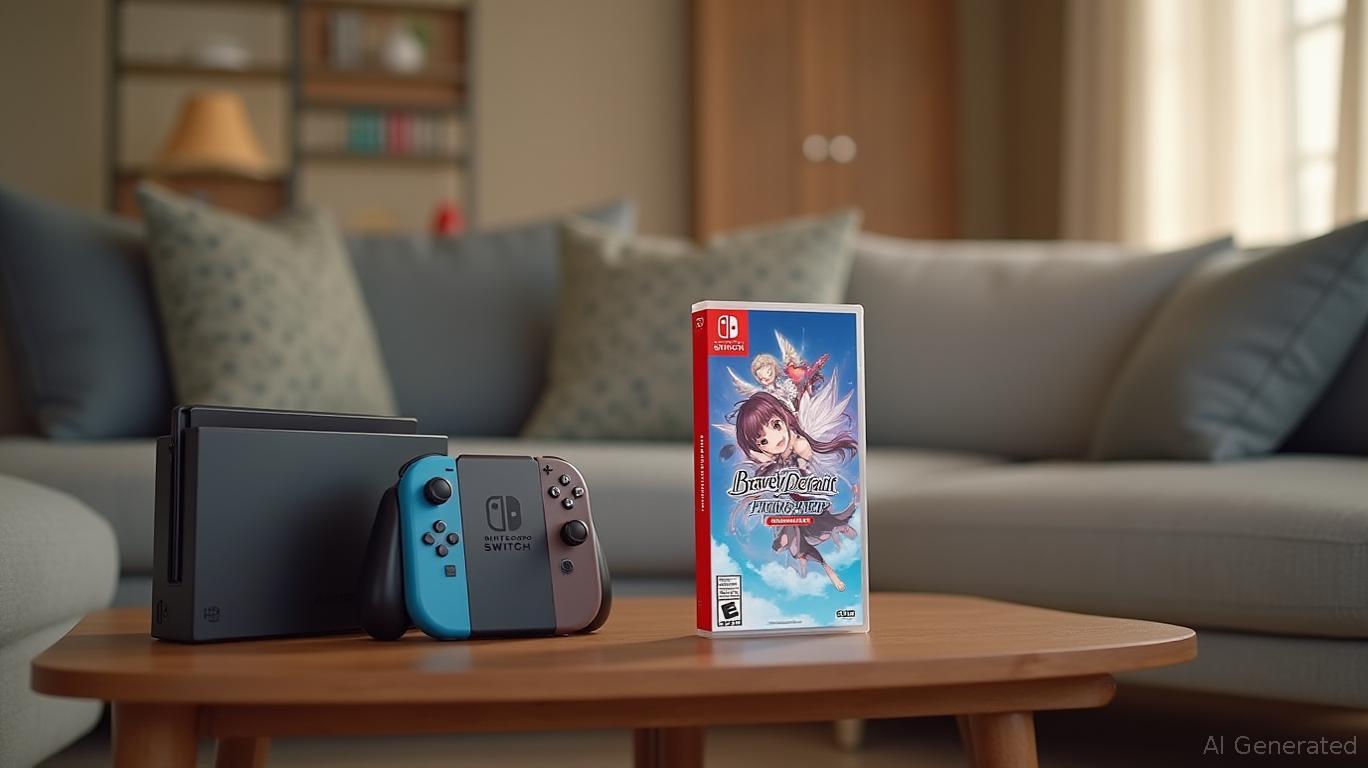Nintendo Switch 2 and *Bravely Default Flying Fairy HD Remaster*: A Synergistic Launch to Drive Hardware Sales and Square Enix's Growth
The Nintendo Switch 2 and Bravely Default Flying Fairy HD Remaster are set to launch simultaneously on June 5, 2025, marking a strategic alignment that could reignite momentum for Nintendo's hybrid console while providing a catalyst for Square Enix's stock growth. The HD remaster's unique features, nostalgic appeal, and optimization for the Switch 2's hardware create a compelling case for a virtuous cycle: hardware adoption drives software sales, which in turn boosts investor confidence in both companies.

The Nostalgia Factor and Synergistic Hardware Features
The Bravely Default series, known for its turn-based combat and rich storytelling, has built a dedicated fanbase since its debut in 2012. The HD remaster enhances this IP with features tailored to the Switch 2's capabilities, including:
- Dual-Mouse Minigames: Leverage the Switch 2's new dual-mouse controllers, offering interactive gameplay mechanics that deepen engagement.
- Enhanced Battle System: The “Brave & Default” combat system is refined, allowing players to strategize turns with greater precision.
- Quality-of-Life Improvements: Fast-forward options, adjustable enemy encounters, and modernized online compatibility reduce friction for both new and returning players.
These additions not only appeal to nostalgic fans but also attract casual gamers seeking accessible yet deep RPG experiences. The game's $39.99 price tag and PEGI 12/ESRB Teen ratings position it as a mainstream purchase, ideal for driving Switch 2 adoption among families and budget-conscious buyers.
Historical Precedent: First-Party Exclusives as Console Lifelines
Nintendo's history underscores the critical role of first-party exclusives in sustaining hardware sales. The Wii's 2007 success, which reached 3.63 million units sold in Japan, was fueled by titles like Wii Sports and Super Mario Galaxy. However, sales declined sharply after 2008 due to a lack of high-profile releases, proving that software must evolve alongside hardware.
The Switch's hybrid design and first-party hits like Animal Crossing: New Horizons and The Legend of Zelda: Breath of the Wild have kept it competitive. Similarly, the Switch 2's launch with a polished RPG like Bravely Default could replicate this pattern, turning the console into a must-have for RPG enthusiasts.
Square Enix's Strategic Shift and Stock Potential
Square Enix's relationship with Nintendo has been pivotal in Japan's gaming landscape. During the PS1/PS2 eras, titles like Final Fantasy VII and Dragon Quest VIII drove PlayStation dominance. However, struggles with HD transitions in the PS3 era led Square Enix to pivot toward Nintendo platforms, where franchises like Kingdom Hearts thrived.
The Bravely Default remaster continues this shift, aligning with Nintendo's strategy to bolster its software library. Historically, Square Enix's stock has correlated with the success of its Nintendo exclusives. For instance, Kingdom Hearts III's 2019 launch on the Switch contributed to Nintendo's hardware sales growth and likely boosted Square Enix's revenue streams.
While the Bravely series lacks the mass appeal of Final Fantasy, its loyal fanbase and the remaster's enhanced features could generate organic buzz. Analysts estimate that strong sales of the game could add 5–10% to Square Enix's fiscal 2026 earnings, particularly if it becomes a top-selling title on the Switch 2.
Investment Implications
- Nintendo (NTDOY): The Switch 2's launch is a pivotal moment. If the console achieves initial sales of 5–7 million units (in line with its predecessor's first-year performance), Nintendo's stock could see a 10–15% premium. A successful Bravely Default launch would reduce risks of post-launch sales slumps, similar to how Animal Crossing sustained Switch momentum.
- Square Enix (6469.T): The game's synergy with Switch 2 hardware creates a low-risk opportunity for the company to capitalize on nostalgia-driven demand. Investors should monitor pre-order figures and sales data in the first month post-launch, as these metrics will signal the game's impact on both hardware adoption and Square Enix's financial health.
Conclusion
The simultaneous launch of the Switch 2 and Bravely Default Flying Fairy HD Remaster exemplifies a strategic partnership where hardware and software amplify each other's potential. For Nintendo, the remaster is a timely exclusive to differentiate the Switch 2 in a crowded market. For Square Enix, it's a chance to leverage nostalgia and innovation to drive stock growth. Investors should view this as a win-win scenario: Nintendo's hardware gains momentum, and Square Enix's software delivers a revenue boost. Both companies stand to benefit from a cycle where hardware adoption fuels software sales—and vice versa—creating a compelling investment narrative for the coming quarters.

Comments
No comments yet